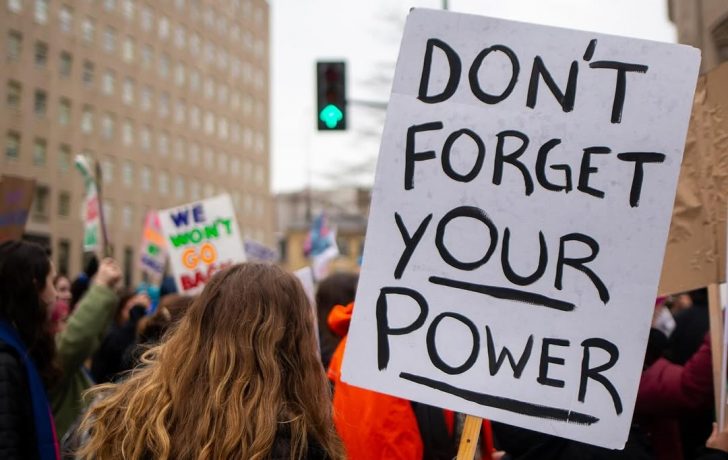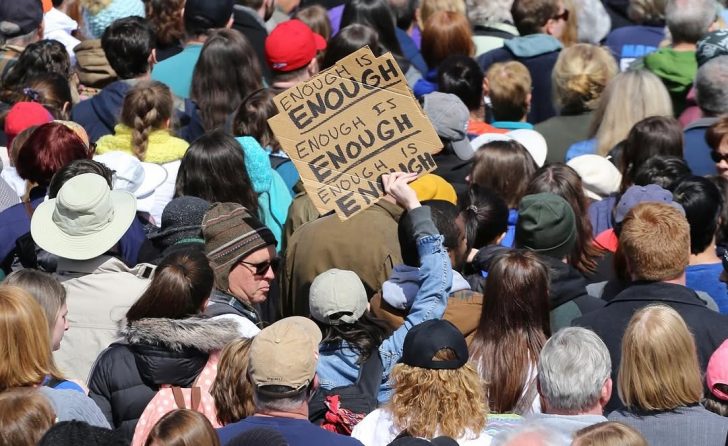Vanessa Wruble, a name deeply etched into the legacy of The Women’s March, is spending this year far from the crowded streets of Washington, D.C. As thousands prepare to gather on Saturday for what was once a historic display of solidarity, Wruble will be at her farm in the California desert. Her decision to step away speaks volumes about how the movement she helped ignite has evolved.
In January 2017, like countless others, Wruble was devastated by Donald Trump’s unexpected 2016 victory over Hillary Clinton. Within weeks, she and a group of determined activists orchestrated what became the largest single-day protest in U.S. history.
That January, over half a million people flooded Washington, D.C., while millions more marched in cities across the nation. The movement became a defining moment of resistance to Trump’s presidency.
The 2017 Women's March Was Unprecedented

Women's March / IG / In January 2017, Vanessa Wruble along with other pioneering women of the Women’s March, hosted the largest single-day protest in the history of the U.S. bringing some 500,000 people.
The Women’s March was not just a protest. It was a revolution. The now-iconic pink “pussyhats” and handmade signs symbolized a collective defiance against Trump’s presidency and policies. Women, along with allies from all walks of life, demanded change. It was a day fueled by anger, hope, and an urgent need to resist.
That same energy propelled the movement to influence midterm elections in 2018. With its unrelenting push for progressive causes, the Women's March helped inspire hundreds of women to run for office, many of whom went on to win.
Likewise, it also played a pivotal role in flipping the House of Representatives. It gave Democrats a critical foothold in Washington. For a moment, the movement seemed unstoppable.
The Movement is Now in Crisis
Fast forward eight years, and the landscape has changed. This year’s event, rebranded as the People’s March, highlights a coalition of progressive organizations like Planned Parenthood and the Sierra Club. Organizers are aiming for solidarity, much like in 2017. But the projected turnout - around 50,000 - pales in comparison to the original march.
However, this shift reflects more than dwindling numbers. It highlights a broader challenge: sustaining momentum. The Women’s March became synonymous with resistance against Trump. But with his return to power following his victory over Vice President Kamala Harris in November, the movement faces an existential crisis.
How do you reignite a fire when the flames of resistance feel like they have already burned out?
Why Did Vanessa Wruble Step Away?

Women's March / IG / Experts argue that the anger those women had against Trump back in 2016 is now fading away.
Shortly after the first Women’s March, she left the organization, citing tensions related to her Jewish identity. Her exit underscored deeper fractures within the group.
Internal conflicts, allegations of antisemitism, and leadership disputes plagued the movement from the start. The original co-chairs - Linda Sarsour, Tamika Mallory, Carmen Perez, and Bob Bland - have since stepped down. This has left the organization without the same high-profile leadership it once had.
But Wruble’s absence also symbolizes a broader fatigue within the resistance. The movement that once electrified millions is grappling with questions about its effectiveness and future. The initial spark - fueled by anger at Trump - has now faded.
The Women’s March galvanized activists for other causes, from the #MeToo movement to the March for Our Lives. It inspired demonstrations against gun violence and racial injustice, such as the protests following George Floyd’s death in 2020. But the energy that once unified these causes is whisking away now.